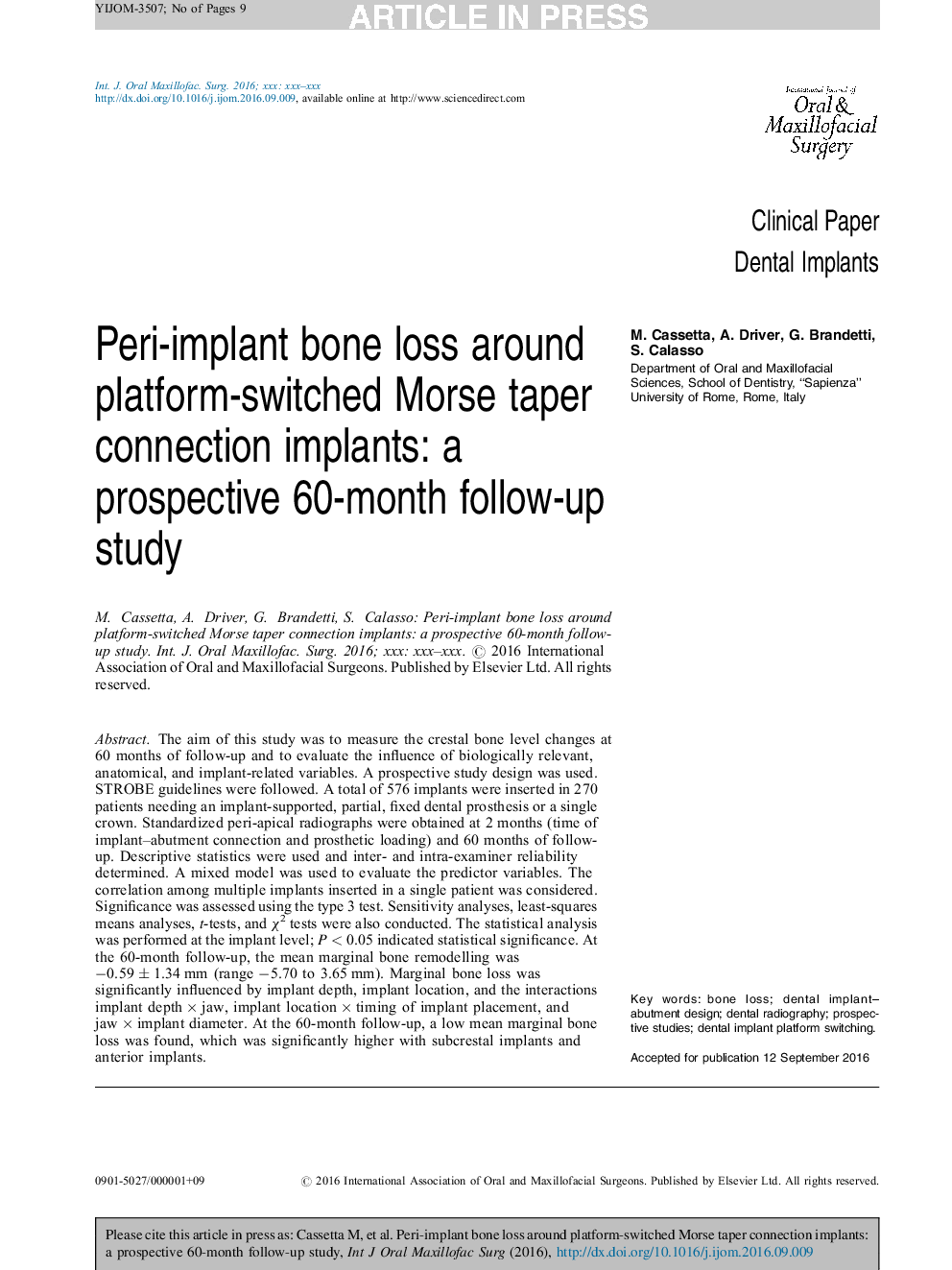| Article ID | Journal | Published Year | Pages | File Type |
|---|---|---|---|---|
| 5638822 | International Journal of Oral and Maxillofacial Surgery | 2016 | 9 Pages |
Abstract
The aim of this study was to measure the crestal bone level changes at 60 months of follow-up and to evaluate the influence of biologically relevant, anatomical, and implant-related variables. A prospective study design was used. STROBE guidelines were followed. A total of 576 implants were inserted in 270 patients needing an implant-supported, partial, fixed dental prosthesis or a single crown. Standardized peri-apical radiographs were obtained at 2 months (time of implant-abutment connection and prosthetic loading) and 60 months of follow-up. Descriptive statistics were used and inter- and intra-examiner reliability determined. A mixed model was used to evaluate the predictor variables. The correlation among multiple implants inserted in a single patient was considered. Significance was assessed using the type 3 test. Sensitivity analyses, least-squares means analyses, t-tests, and Ï2 tests were also conducted. The statistical analysis was performed at the implant level; P < 0.05 indicated statistical significance. At the 60-month follow-up, the mean marginal bone remodelling was â0.59 ± 1.34 mm (range â5.70 to 3.65 mm). Marginal bone loss was significantly influenced by implant depth, implant location, and the interactions implant depth Ã jaw, implant location Ã timing of implant placement, and jaw Ã implant diameter. At the 60-month follow-up, a low mean marginal bone loss was found, which was significantly higher with subcrestal implants and anterior implants.
Related Topics
Health Sciences
Medicine and Dentistry
Dentistry, Oral Surgery and Medicine
Authors
M. Cassetta, A. Driver, G. Brandetti, S. Calasso,
